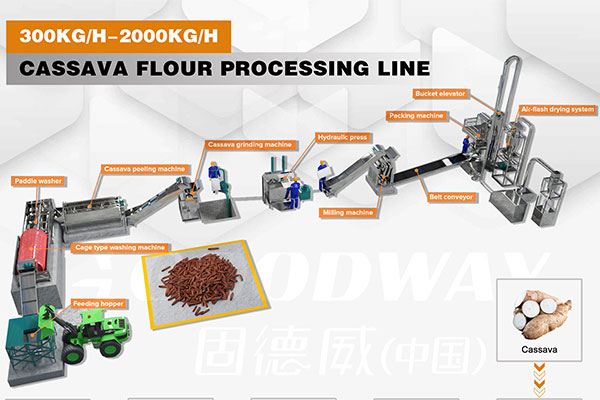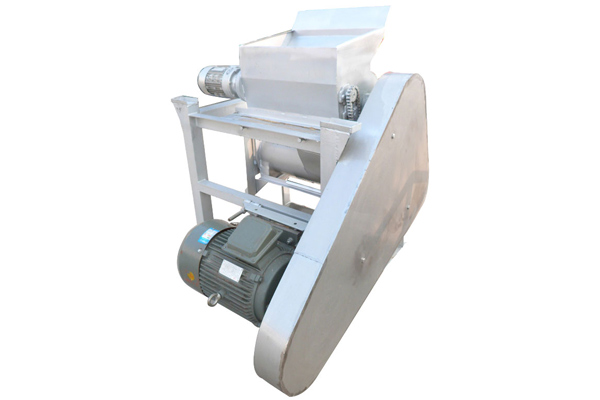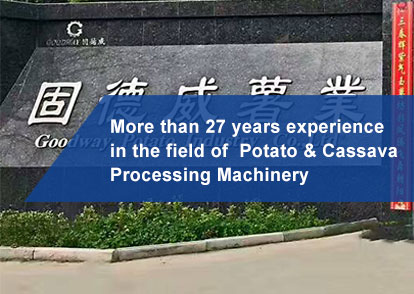1. Investment status of potato starch processing
Crops such as sweet potato, potato, cassava, arrowroot, taro, acorn, pea, lotus root, and wheat are rich in starch, protein, pectin, cellulose, amino acids, vitamins, and various minerals, with high taste and nutritional value.
Many of these crops are planted in different areas in China. With the help of the national targeted poverty alleviation policy, more and more farmers are gradually developing towards the field of cassava starch processing. Normative industrial cooperation models such as "enterprise company + planting cooperative + poor households" have emerged, gradually forming a good trend of starch processing industrialization, intensification, and scale.
This undoubtedly provides an excellent driving force for the development of potato planting, potato starch processing, and potato noodle processing industries, and is conducive to implementing the principle of the national poverty alleviation policy.
2. Considerations for investing in cassava starch processing equipment
1) Raw materials: Various processing crop raw materials such as sweet potato, potato, cassava, arrowroot, taro, acorn, pea, lotus root, and wheat etc.
2) Land planting area: Stable sources of raw materials for cassava starch processing, and broad planting areas or possible areas for development.
3) Funds: mainly including basic construction, starch processing equipment, personnel, and working capital. The equipment investment amount is influenced by the degree of automation, processing technology, and material manufacturing.
4) Water source: Adequate and clean water source is necessary for cassava starch processing and is the basic premise and guarantee for the deep processing of starch projects.
5) Electricity: Environmentally friendly and hygienic electricity sources meet the requirements of green and environmentally friendly processing technology. Therefore, perfect electric power infrastructure greatly promotes the smooth development of starch deep processing projects.
6) Gas: Heating and energy supply methods such as clean coal, liquefied gas, natural gas, and electricity. To avoid coal pollution, try to use environmentally friendly processing methods such as electromagnetic heating technology.
3. Investment cost and profit of cassava starch processing equipment
Take a fully automatic sweet potato starch production line processing 1t dry starch as an example. Require 5t sweet potatoes and 10-15t of water.
1) Raw materials (sweet potatoes): 5t sweet potatoes at a market price of 0.35-0.4 yuan/g. Cost: 5000kg x 0.7 yuan/kg = 3500 yuan.
2) Water use: costs 3 yuan/t, 10t-15t of water for 5t of sweet potatoes. Water fee: 10t x 3 yuan/t = 30 yuan.
3) Electricity use: consumes 150-200 kw/h, costs 0.5-1 yuan/kwh (note that agricultural electricity and industrial electricity prices are different). Electricity fee: 150 kw/h x 0.5 yuan/kwh = 75 yuan.
4) Labor: 6 people/shift x 100 yuan/person ÷ 8h = 75 yuan.
5) Fuel (coal): 100kg of coal is used for drying 1t of starch, and 1 ton of coal costs 1000 yuan. The cost of coal is 100 yuan.
6) Direct production cost = raw material cost + water fee + electricity fee + labor cost + fuel cost = 3780 yuan.
7) Other expenses: depreciation, taxes, etc. are calculated based on the actual situation of each user's location. Profit is calculated based on the actual selling price and minus the cost.
Note: Due to the different market conditions for sweet potato starch processing in various regions of the country, different sweet potato prices, water and electricity fees, labor costs, and starch price standards, the economic benefits of starch production will vary. Therefore, the data in this article is for reference only. Please calculate based on the local market price.
4. Requirements for investing in cassava starch processing equipment factory construction
There are generally five specific requirements for choosing a factory location:
1) Choose a location near the raw material production area, the product sales market, and the surrounding agricultural markets.
2) Choose a location with convenient transportation, close to the potato production base, and the fresh potato raw material planting area is near the highway for easy transportation.
3) Choose a location near a good water source (soft water, pollution-free, disease-free, and meeting drinking water standards), with sufficient water volume, preferably deep well water or river water, and easy drainage, without pollution around.
4) Choose a location close to the power supply, with complete water and electricity facilities, adequate power supply, and reliable power supply.
5) Regarding the requirements for factory construction conditions, terrain, and land area, the terrain, size, and slope of the factory area should be conducive to transportation, water supply, drainage, and the processing operation characteristics.

 EN
EN
 fr
fr  es
es  it
it  pt
pt 







